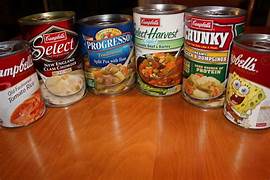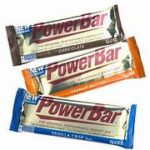Canned soups are a quick and convenient meal option, but not all of them are as healthy as they seem. Many canned soups are packed with sodium, unhealthy fats, and preservatives that can have a negative impact on your health. In this blog, we’ll explore the top 14 unhealthiest canned soups that you should avoid and offer healthier alternatives.
1. Chowders: The Creamy Soup with Hidden Risks
Chowders, particularly those made with cream and seafood, are often high in sodium and fat. A typical can of Progresso’s Chicken Corn Chowder contains 850 milligrams of sodium per serving, and the Campbell’s Homestyle New England Clam Chowder can go up to 1,490 milligrams per can. Consider making homemade chowder with fresh ingredients to control the sodium and fat content.
2. Gumbo: Spicy but Sodium-Laden
While gumbo is a flavorful dish, canned versions like Campbell’s Chunky Chicken and Sausage Gumbo pack in 1,470 milligrams of sodium per can, which is more than half your daily limit. Opt for homemade gumbo with a focus on fresh ingredients and reduced sodium.
3. Bisques: Seemingly Healthy, but Not So Much
Bisques can be deceivingly unhealthy, often containing high amounts of saturated fat and added sugar. For example, Pacific Foods’ Organic Tomato Bisque offers 50% of your daily saturated fat intake. Look for bisques made with lighter ingredients or try making your own at home.
4. Chili: A Fatty, Sodium-Rich Classic
Many canned chili brands, like Wolf Brand Chili with Beans, contain over 2,600 milligrams of sodium per can. Choose low-sodium or homemade versions to avoid excess sodium and saturated fats.
5. Cream of Mushroom Soup: A Casserole Staple, but Beware of Sodium
“Cream of” soups, like Campbell’s Condensed Cream of Mushroom Soup, often have high sodium content. A single can can provide almost 93% of your daily sodium intake. Consider making your own cream of mushroom soup using healthier ingredients.
6. Italian-Style Soups: Hearty, but Full of Salt
Italian-style soups, such as Campbell’s Chunky Minestrone with Italian Sausage, contain up to 65% of your daily sodium intake per can. Opt for homemade minestrone or low-sodium options to stay on track with your health goals.
7. Creamy Versions of Traditional Soups
Adding cream to soups can drastically increase the fat and sodium levels. For example, Progresso’s creamy chicken and wild rice soup has over 76% of your daily sodium intake. Choose clear broth-based soups for a healthier alternative.
8. Dumpling Soups: Sodium Overload in a Can
Canned dumpling soups, like Sweet Sue Chicken & Dumplings, can contain over 100% of your daily sodium intake. Skip the can and try making dumplings at home with lower sodium content.
9. Cheddar Cheese Soup: A Sodium and Fat Bomb
Cheddar cheese soups, like Campbell’s Condensed Cheddar Cheese Soup, can contain all of your daily sodium in one can. Try making your own cheese sauce to control sodium and fat levels.
10. Pot Pie Soups: High Fat and Sodium
Pot pie-inspired soups, such as Campbell’s Chunk Pub-Style Chicken Pot Pie soup, pack a heavy dose of sodium, fat, and cholesterol. Making a homemade version can help you manage the nutritional content better.
Whatever your stance on beef stew, though, no one can deny that it leaves a little to be desired on the nutrition side. The classic Dinty Moore Beef Stew comes with 82% of your daily recommended sodium per can, as well as 40% of your daily recommended saturated fat per can. The brand does offer a 25% less-sodium variant, but it still comes with just as much saturated fat and total fat. Armour Star Classic Beef Stew comes with an even more impressive amount of sodium, at 108% per can, and 46% of your daily recommended saturated fat per can.
In short, if you have a hankering for some beef, potatoes, and carrots, in a simmering gravy-esque broth, just make a pot roast. It might require a little more effort, but your arteries will thank you.
Read More: https://www.thetakeout.com/1685617/most-unhealthy-canned-soups/
Conclusion
While canned soups are convenient, many of them are loaded with sodium, unhealthy fats, and additives that can affect your health. It’s always better to make your own soups at home using fresh, wholesome ingredients. If you must go with canned soups, be sure to check labels carefully for sodium content and opt for lower-sodium varieties whenever possible.
For more healthy eating tips, check out our Healthy Eating Tips for Beginners.









